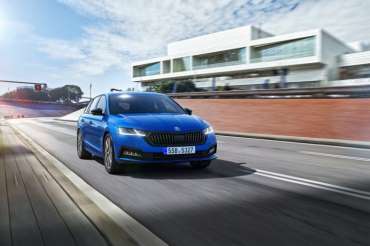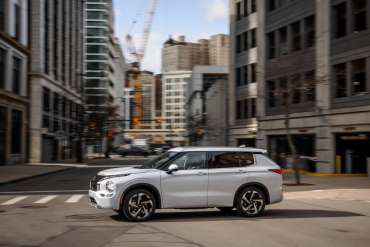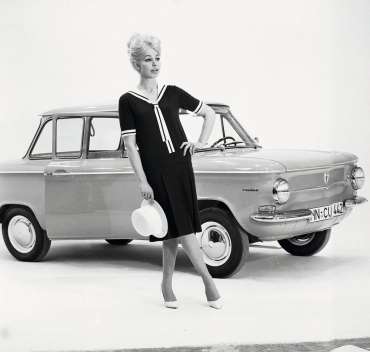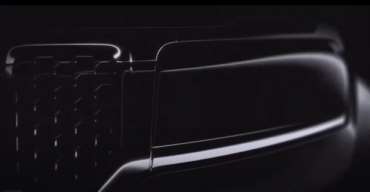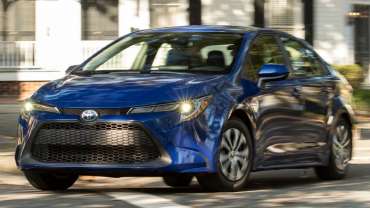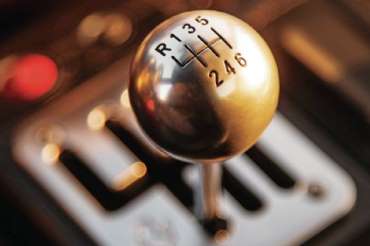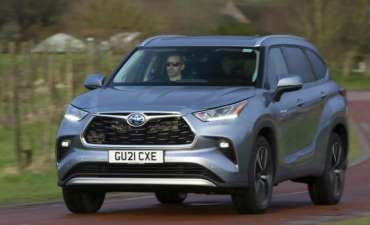
Worldcarblog.com
Skoda has prepared a new version of the Octavia model
Skoda has prepared a new equipment package for its bestseller, so the fourth generation Octavia model will now be offered for the first time in a more dynamic edition - Sportline. It will, therefore, be a version just below the sporty Octavia RS model.
Situated between the Style trim level and the sporty Octavia RS model, the new Sportline variant brings black exterior elements, a three-spoke multifunction sports steering wheel, sports seats with integrated headrests and, perhaps best of all, the option to order with DCC dynamic chassis control.
On the outside, the Sportline Octavia differs from the others in the front splitter, as well as in the grille frame and the Skoda inscription on the tailgate, which comes in a glossy black color. The rear is also a black diffuser with chrome elements, while the hatchback version also boasts a black rear spoiler.
Standard equipment for the Octavia Sportline includes black 17-inch Pulsar alloy wheels, and metallic black 18-inch Vega wheels are also available as an option, and exclusively for Sportline 19-inch black polished Taurus alloy wheels. The front wings are decorated with Sportline badges.
In terms of engines, the Škoda Octavia Sportline is available with petrol and diesel engines, a natural gas (CNG) version, as well as plug-in hybrid and mild-hybrid technology and front-wheel drive or all-wheel drive. Output power ranges from 85 kW (115 hp) to 150 kW (204 hp). The 110 kW (150 hp) 1.5 TSI petrol can be ordered with the optional 7-speed DSG transmission and mild-hybrid technology, while the 140 kW (190 hp) 2.0 TSI comes standard with a DSG transmission and all-wheel drive.
The 2.0 TDI diesel can be ordered with 85 kW (115 hp), 110 kW (150 hp) and 147 kW (200 hp).
The Octavia iV Sportline is a 150 kW (204 hp) plug-in hybrid, while the G-TEC version on compressed natural gas (CNG) delivers 96 kW (130 hp).
In the cabin, the Octavia Sportline is inspired by the level of Style equipment and includes Piano Black decorative strips. The sports seats have integrated headrests and are equipped with specially breathable ThermoFlux upholstery. The multifunctional sports steering wheel has three arms and the Sportline mark, while the decorative sills on the front door have the inscription Octavia. In addition, the new variant of the Czech bestseller also offers well-known Simply Clever solutions, such as a USB-C port on the interior mirror.
Tested: 2022 Mitsubishi Outlander Goes from Punchline to Prime Time
With a little help from Nissan, Mitsubishi returns to relevancy with its undeniably distinct and unexpectedly engaging fourth-generation Outlander SUV.
Mitsubishi needs a hit. It's no secret that the Japanese automaker is now a minor player in the U.S. market, its product lineup lacking the star power of an Evo, or even a Montero. It doesn't help that two of its four remaining models—the Eclipse Cross and the three-row Outlander—are compact crossovers that compete in the most cutthroat segment in America. After all, there are only so many driveways to fill every year, and in 2020 alone more than 1 million of them added either a new Chevy Equinox, Honda CR-V, or Toyota RAV4. Meanwhile, the Outlander (Mitsubishi's most popular U.S. model) found just 173,674 takers from 2016 through 2020. Facing increasing competition and decreasing market share, the company could've ordered up another facelift and resigned itself to perpetual fringe-player status. Instead, it found a tag-team partner and fought for relevancy.
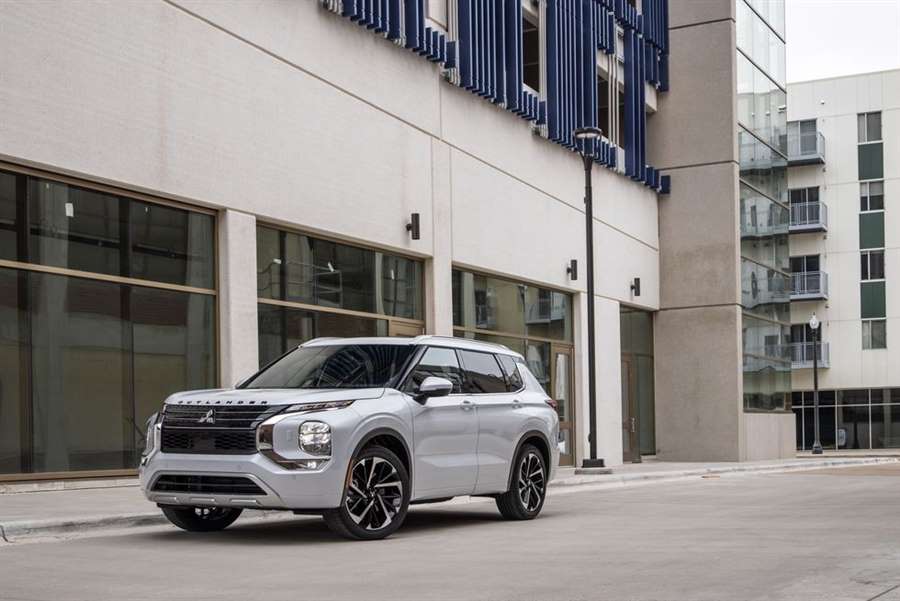
Enter the Renault-Nissan-Mitsubishi Alliance. While there’s certainly plenty of scandal and strife between Nissan and Renault, this is also Mitsubishi's redemption story. In short, the merger means Nissan developed a platform and powertrain for the all-new 2021 Rogue and then shared those fundamental pieces with Mitsubishi, which used them to create the fourth-generation 2022 Outlander. The result is a surprisingly compelling addition to the throng of compact utes jockeying for the public's attention and the press's admiration. To be clear, we're not just impressed with the new Outlander because it's better than its predecessor, which set the bar somewhere down in the Mariana Trench. We're charmed by its competent handling, handsome interior, and roster of desirable features. Its extroverted bodywork will likely have as many haters as fans, but its bold face does look better in person and some might even say it has shades of Range Rover if you look past the three-diamond emblem and squint really hard.
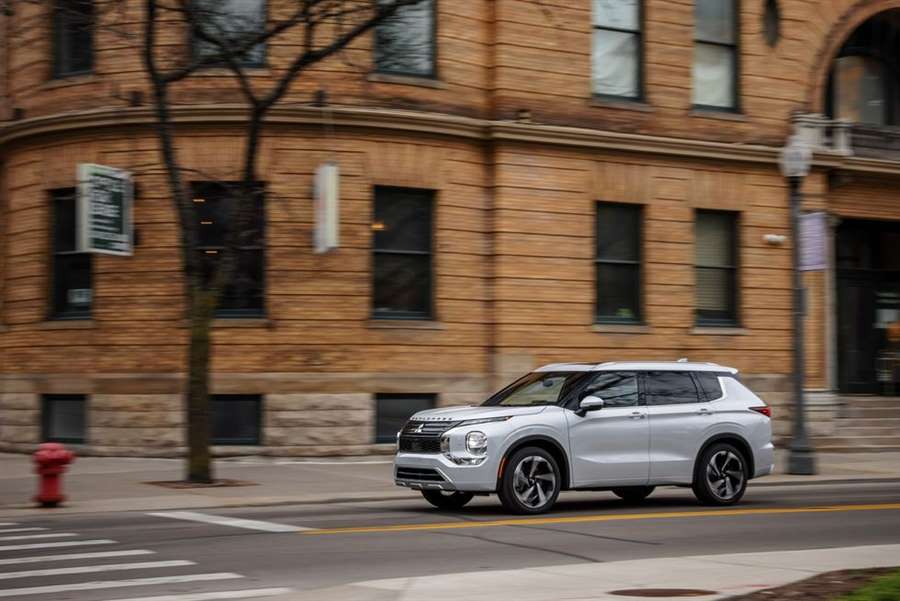
HIGHS: A cabin we like spending time in, more popular modern features, sporting intentions shine through not-so-sporting bones.
Mitsubishi calls the design inspiration I-Fu-Do-Do, which means “authentic and majestic” in Japanese. We'll just leave that right there. But we will point out that the new Outlander is one of only two compact crossovers with 20-inch wheels, which is surely to attract a size queen or two. The Volkswagen Tiguan also offers 20s and it's the only other seven-seater in this class, but the VW’s third row is limited to front-drive models. Every Outlander seats seven, but only five comfortably. Even though Mitsubishi says the rear-most seats are intended for kids only, we're confident anyone with legs won't be comfortable back there. At least passengers in the other two rows have adequate stretch-out space and enjoy more hip and legroom than before, thanks to a 3.4-inch width increase and an extra 1.4 inches between the axles. Cargo volume also grows from 33 to 34 cubic feet behind the second row and from 11 to 12 cubes behind the third row.
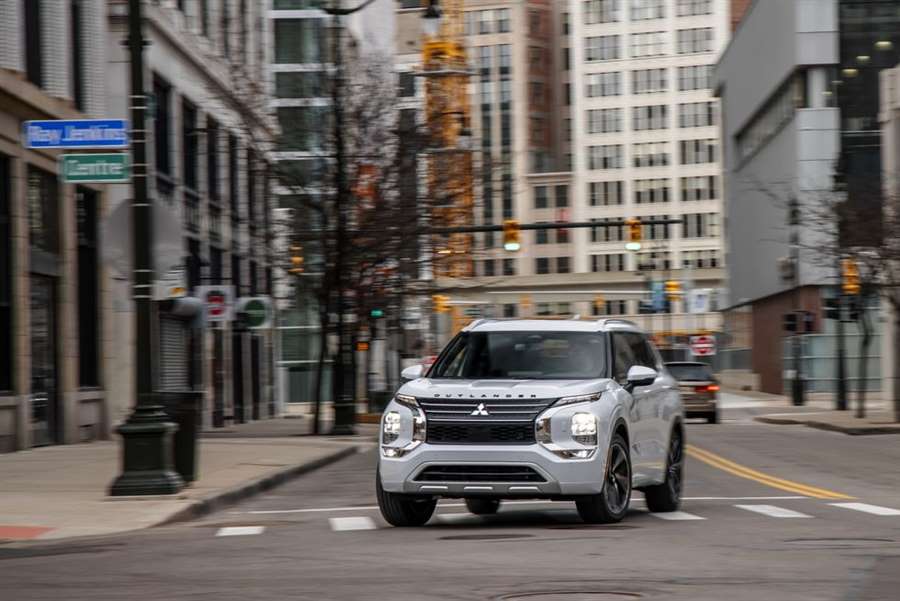
While the Outlander’s exterior is a clean break from the previous generation, its interior is an even wilder departure—not because it’s outrageously bizarre or futuristic, but because it’s genuinely nice. In the past, our most vitriolic comments were reserved for the Outlander’s prehistoric interior design and offensively cheap materials. Now, the dashboard is almost luxury-car grade in its elegant simplicity, and the hard plastics are mostly relegated to surfaces out of sight and infrequently within reach. Even base models have dual-zone climate control, knurled switchgear, and nice-feeling window switches. Stepping to a top-of-the-line SEL trim brings legitimate luxuries like leather, quilted door panels, and aluminum trim on the center console. Our Diamond White SEL example carried an as-tested price of $38,590, but that included the $2700 SEL Touring package with semi-aniline leather upholstery, a 10-speaker Bose stereo, a head-up display, and a panoramic sunroof. While we appreciated the crisp resolution and configurability of the 12.3-inch digital gauge cluster, only die-hard fans of The Price Is Right will appreciate the Big Wheel-inspired speedometer and tachometer. The 9.0-inch touchscreen infotainment system—up from the standard 8.0-incher—works flawlessly with wireless Apple CarPlay, though Android Auto users must still be plugged in.
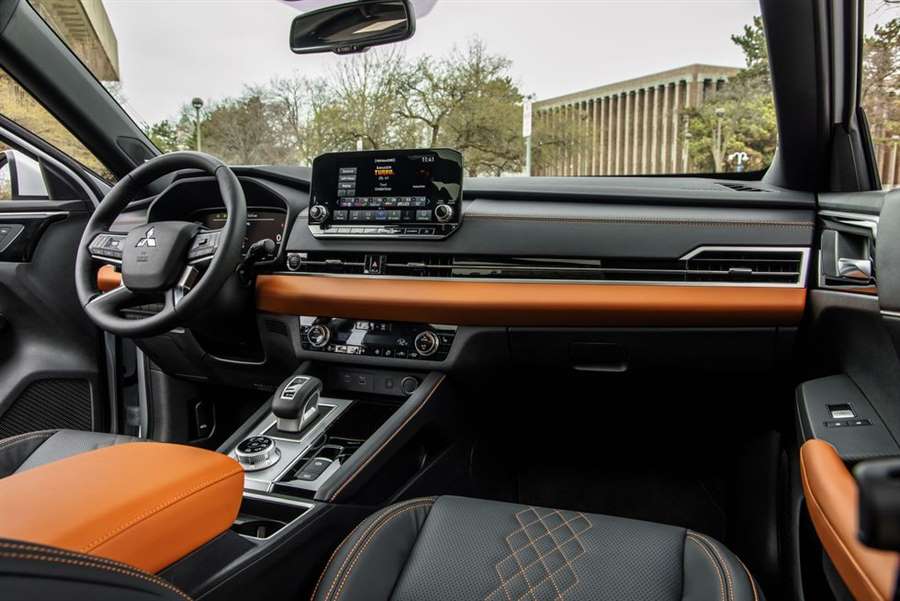
The Outlander SEL we tested was also fitted with the $1800 all-wheel-drive system and the aforementioned 20-inch wheels. They're standard on most trims and even optional on the base one and are fitted with wide-for-this-class (255 section width) Bridgestone Ecopia H/L 422 Plus all-season tires. They provide a notable 0.85 g of cornering grip and contributed to the Outlander's newfound agility. Sure, their narrower sidewalls and the SUV's lack of isolation combined to send hollow thuds up through the structure. The hood flutter at 70 mph is enough to have a passenger question whether the bonnet was actually latched. We’re not surprised that the steering offers little in terms of feedback, but the car doesn’t fall on its face if you have to hustle it around a cloverleaf to merge. It needed 172 feet to stop from 70 mph, which is respectable for the class and 8 feet shorter than a 2016 Outlander we tested. We’d feel even better about the brakes if the pedal weren’t so squishy.
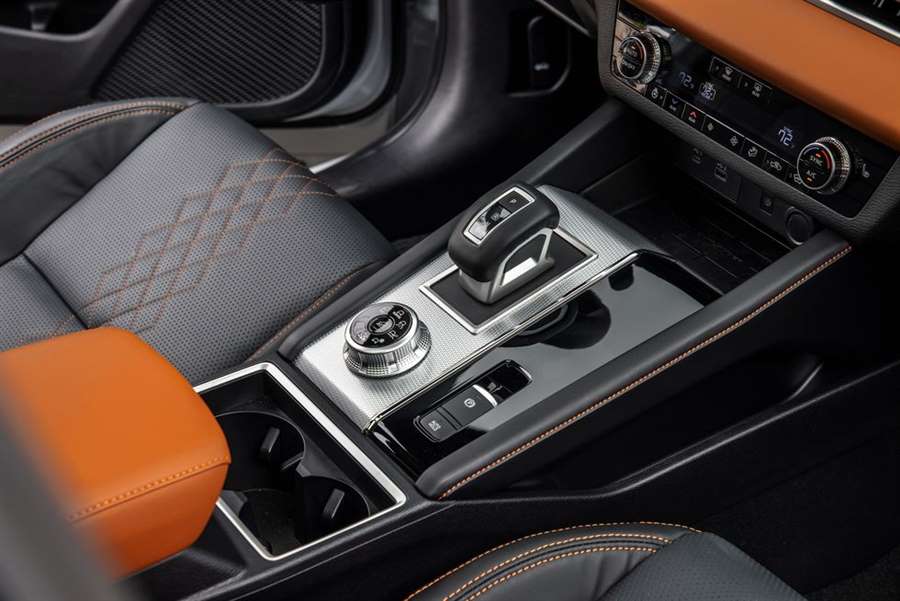
But the biggest demerit is the Outlander’s 181-hp 2.5-liter inline-four and continuously variable automatic transmission (CVT). It's the only powertrain until the plug-in-hybrid variant arrives. Thankfully, the new engine isn't quite the boat anchor that the 166-hp 2.4-liter four-pot it replaces was, but the 224-hp V-6 is no longer an option. The old four-cylinder powertrain carried the Outlander to 60 mph in 9.3 seconds. The Nissan-supplied version takes 8.2 ticks and is a half-second quicker between 50 and 70 mph (6.0 seconds flat). Both times are identical to the Rogue we tested, despite the Mitsubishi's 226-pound disadvantage. But even though the Outlander feels responsive at city speeds and can keep pace on the highway, the transmission's syrupy behavior and overall lack of urgency when merging dulls our enthusiasm. Especially when the top trim's sticker price mirrors that of a turbocharged Mazda CX-5.
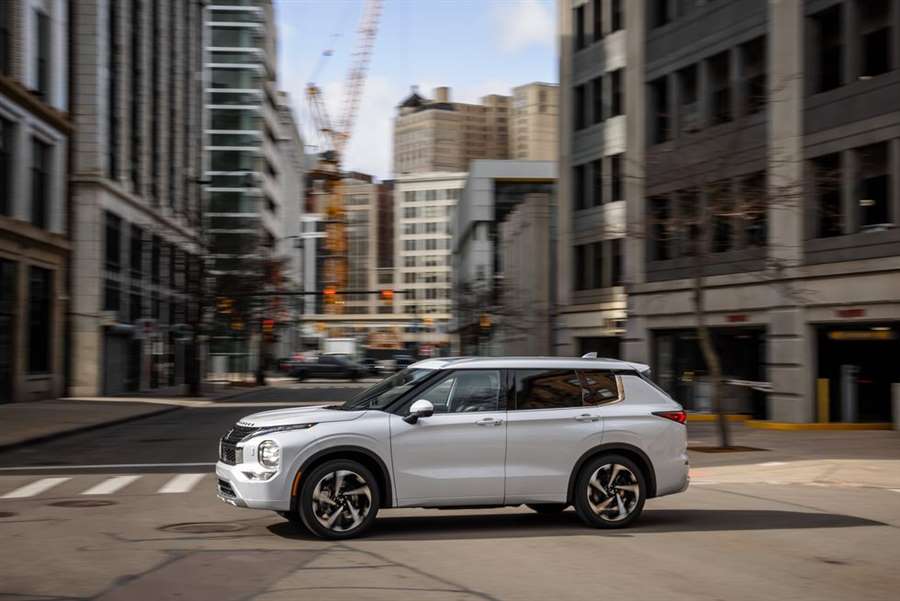
Mitsubishi’s resolutely average powertrain is probably the right call for this market. Remember the 2010 Outlander GT? It featured a V-6, an electronically controlled limited-slip front differential, a lockable center diff, magnesium column-mounted paddle shifters, an aluminum roof, and a 7.5-second 60 time. Nobody bought that one.
So, four-banger and CVT it is. Though the Outlander's CVT mimics traditional gearchanges and effectively mitigates the dreaded engine drone, it doesn't really pay off at the pump. The EPA estimates all-wheel-drive versions will earn 24 mpg city and 30 highway. That's not particularly impressive, and an equivalent and lighter Rogue is rated at 25 mpg city and 32 highway. We tested both on our 75-mph highway fuel-economy test and observed 32 mpg with the Nissan and a much lower 26 mpg with the Mitsubishi.
Even with our enthusiast-slanted gripes and its underwhelming powertrain, the 2022 Outlander finally has some style and substance to compete against today's top compact crossovers. “Spend money where people can see it” is probably a good strategy when your audience cares more about a quality interior than having a tarmac setting on the all-wheel-drive system. And compared with the Rogue, the Outlander also offers a higher towing capacity (2000 pounds versus 1350) and a longer powertrain warranty (10 years or 100,000 miles versus five or 60,000). Credit Nissan with the assist, but Mitsubishi made its own decisions and took its own chances to transform the Outlander from punchline to prime time.
Before the VW Beetle, the charismatic NSU Prinz was made in Sarajevo
The model by which NSU returned to the world of cars was a real hit of the post-war prosperity of Germany. It is about the Prince 4 who lost his kingdom after the creation of Audi. Today, this model is 60 years old, and 50 years ago its production in Sarajevo stopped, when it was inherited by VW Beetle in the Pretis factory. Complete bodies of the Prinza 1000 (then 1200) arrived in Sarajevo, and then parts such as electric wires, batteries, tires were added ... The basic version of the Sarajevo Prinza 1200 cost around 1.8 million dinars, and the average salary was 100,000, writes Jutarnji.
The first car of the manufacturer from Neckarsulm, named Prinz, dates from the end of 1957, but the differences between it and the version that arrived four years later and managed to go beyond Germany are huge.
This is primarily due to the design, because the fourth edition, thanks to pencils by German designer Claus Luthe, took on the then modern, American style, inspired by the 1959 Chevrolet Corvair with clean straight lines, two large circular headlights, generous glass surfaces and a roof that extends slightly above the upper edge of the rear window.
The dimensions of the Prinz 4 are minimalist by today’s standards (length 344 cm, width 149, height 136 and wheelbase 204 cm), but the interior provided a solid amount of space.
A concrete link to the three previous releases was a two-cylinder air-cooled engine based on the experience with motorcycles (NSU was the largest motorcycle manufacturer in the world during the 50s). Located at the rear, with a volume of 598 cc, it developed 30 "horses", and the propulsion engine built into the engine block, which also works as a generator, was one of the original solutions.
Prinz 4 was one of the discoveries of the fair in Frankfurt in 1961, and the following year the production was increased to 300 copies per day. Demand grew thanks to the favorable price, low costs and solid driving characteristics, and already in June 1962, the one hundred thousandth Prinz 4 was produced.
Initially, in addition to the basic model, a richer equipped model with the S mark was offered, and in 1965 a new level of equipment with the L mark was introduced. For example, in 1968, Italy sold almost six times more than Germany.
Immediately after the presentation of Prinz 4, the Typ 43 project was launched, with which the NSU was to step into a higher segment. Since the price was in the foreground, the development started using the same mechanical basis. The only concrete difference on the body was in the longer wheelbase, while the drive was aimed at a more powerful version with four cylinders.
The first solution was created by merging two two-cylinder engines used by Prinz 4. Development took time, and by 1964 the project changed its name to Typ 67, and when it came off the track it became Prinz 1000, which later became versions of TT, TTS and 1200.
Prinz was produced in several countries in South America, Ireland, but also in Sarajevo's Pretis (Tito Sarajevo Company). The company dealt with weapons and, like the Kragujevac Flag, expanded production to motor vehicles. The contract with NSU began with a Maxi motorcycle and a Prima scooter, which were assembled in Vogošća, and the program was extended to cars in 1965.
Complete bodies of Prinza 1000 (then 1200) arrived in Sarajevo, and then parts such as electric wires, batteries, tires were added in Pretis… The basic version of Sarajevo's Prinza 1200 cost around 1.8 million dinars, and the average salary was 100,000. The production, during which about 15,000 copies were made, lasted until 1971, after which new plants were created in Vogošća, in which Volkswagen Bugs were assembled a year later.
The career of Prince 4 was long and successful. In 12 years, it reached the number of almost 600,000 units on the market, while the Prinz 1000 was more successful on the race tracks, especially the TT and TTS versions, than on the market (200,000 in 8 years).
Yet after Volkswagen took over the NSU in 1969 and merged it with the Auto-Union from which Audi emerged, the days for Prinz were numbered. The new owners did not invest in the modernization of the car, which was one of the bestsellers in Germany in the 60's, but also a real competitor to Bubi. Production of the Prinza 4 stopped in July 1973, and its place was taken by the Audi 50.
Jeep announced a new 7-seater crossover
Jeep has released a teaser video as an announcement for its new crossover to be sold in South America.
It is a 7-seater model based on Compass, but as things stand, this novelty will not be called Grand Compass. Some sources mention that it could be named Jeep Commander.
Compared to the standard Compass, this new model will have longer rear doors, longer rear overhangs, modified rear windows and rear pillars.
Inside, a 10.25-inch digital instrument panel, an 8.4 and 10.1-inch infotainment system screen and, of course, three rows of seats are expected.
The engine range will include units known from the Compass, and versions with only front and all-wheel drive will be offered.
{vembed Y=TynTg0kfVUo}
2022 TOYOTA COROLLA: PREVIEW, PRICING, RELEASE DATE
The current-generation Toyota Corolla rolled out in 2019 as a hatchback, then followed in 2020 with a sedan and the model line’s first-ever hybrid variant. The current look is the sportiest one we’ve seen yet, as the Corolla adopted many of the styling cues of the larger Toyota Camry sedan with its gaping grille, muscular lines, and striking lighting elements.
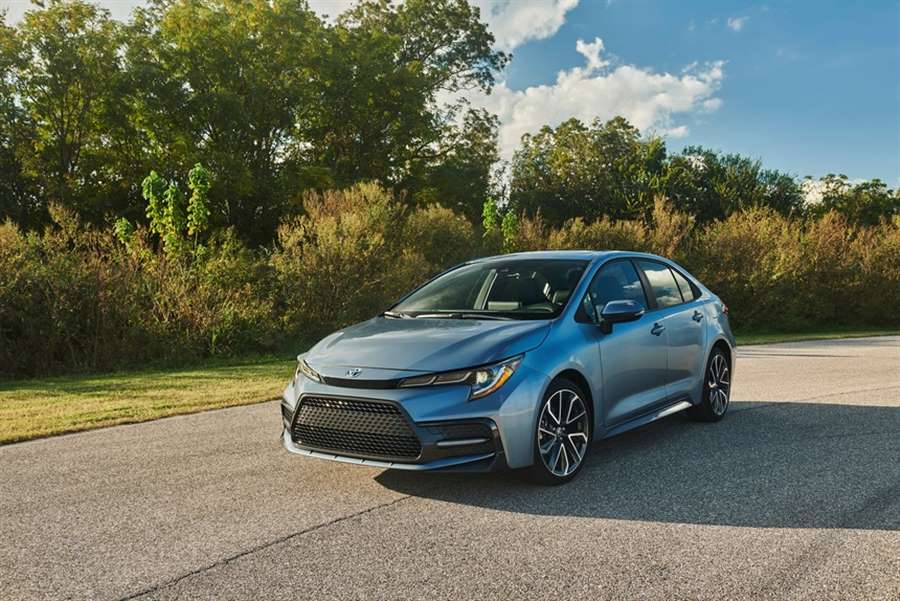
Inside, the Corolla fills its compact mission by offering decent space for five, although four is the ideal. The sedan’s wheelbase is about 2.5 inches longer than the hatchback, for improved interior space. The cabin features a dash-mounted touchscreen for infotainment and carefully placed controls. Fabric-trimmed seats are standard; the imitation leather seats are comfortable and have the look and feel of real hides.
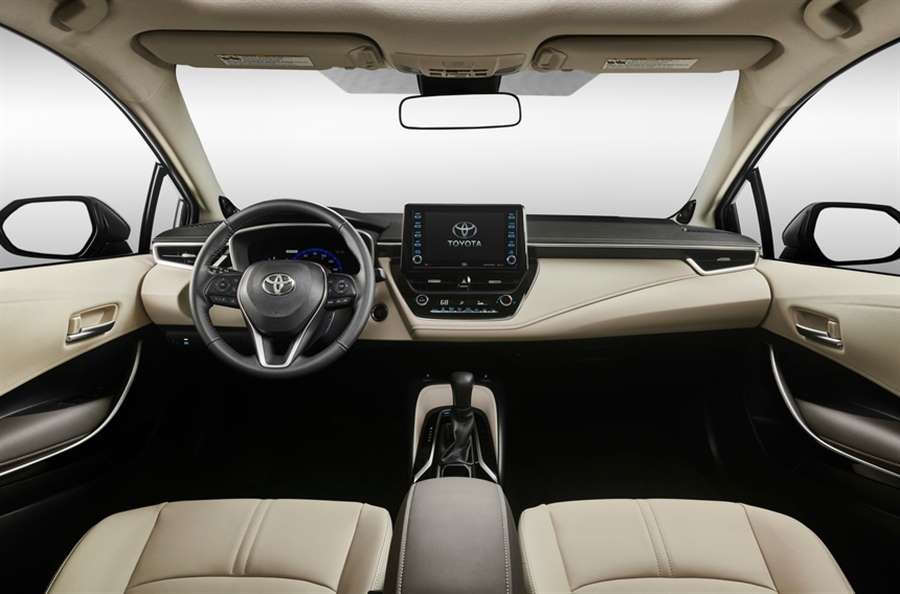
This year, Android Auto is standard, joining Apple CarPlay as the two most important smartphone compatibility options in the business. Base sedan models have a 7-inch touch-screen display, while all other trims come with an 8-inch touchscreen. The list of popular options includes navigation, wireless smartphone charging, and a premium audio system. Optional blind-spot monitoring is widely available. We’re not expecting additional changes for 2022.
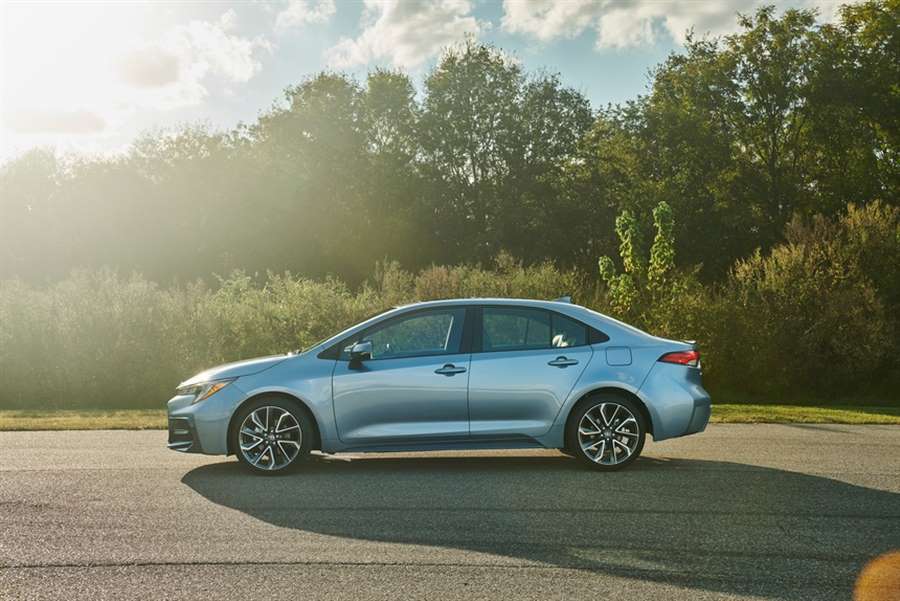
Under the hood, the Corolla features two engine choices. The base sedan models come with a 1.8-liter four-cylinder engine with 139 horsepower and 126 pound-feet of torque. This one shuttles power to the front wheels utilizing a continuously variable transmission or a 6-speed manual transmission. All hatchback models and some sedan trims come with a 2.0-liter four-cylinder engine with 169 horsepower and 151 pound-feet of torque. The engine also works with a CVT or a 6-speed manual.
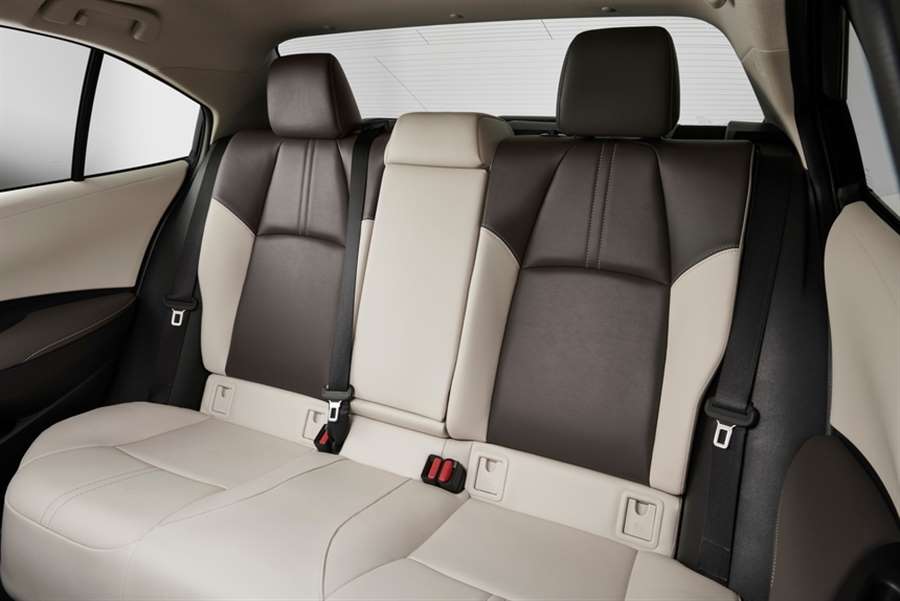
The larger engine is surprisingly the more efficient of the two, delivering as high as 40 mpg highway on some trims. That’s 2 mpg more than the best fuel economy of the base engine.
If you’re shopping the Corolla Hybrid, Toyota uses the 1.8-liter engine and operates it in the efficient Atkinson cycle to deliver 121 horsepower and 105 pound-feet of torque. This model makes an EPA-estimated 52 mpg combined, which is 30-percent higher than the best gas model.
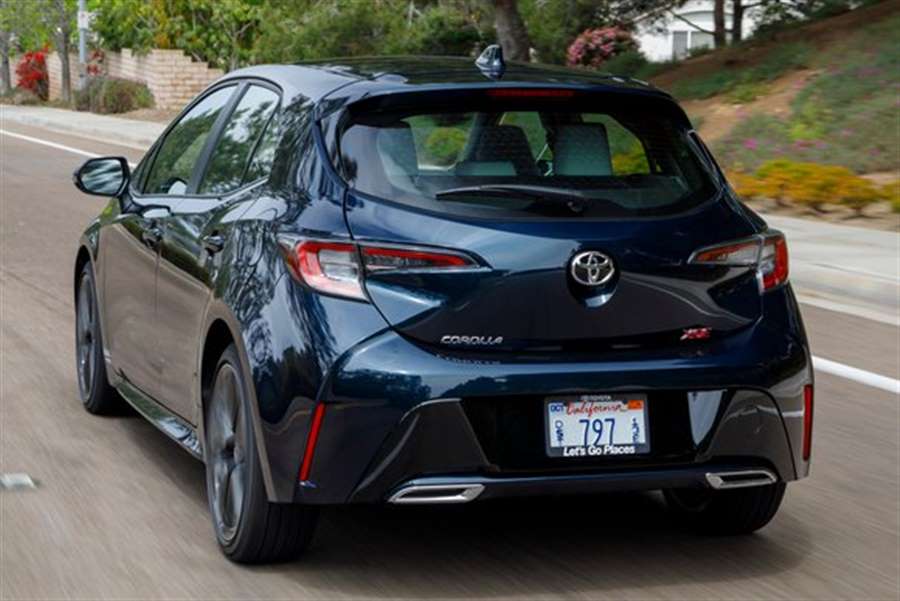
PRICING & RELEASE DATE
There is no official on-sale date for the 2022 Toyota Corolla, but we expect it will arrive in the spring based on previous release schedules.
Pricing is also not available. As a carryover vehicle, we expect pricing to remain close to the current model’s $20,880 to $29,165 (destination fees included) MSRP for the sedan. Pricing for the hatchback and hybrid is slightly higher.
Here's how to properly adjust the engine speed
Speed adjustment is a technique used when shifting into a lower gear during deceleration and / or braking. With the correct application of this technique, the speeds can be changed gently, without sudden changes in the vehicle's center of gravity and "bumps".
In addition, speed adjustment prevents engine braking, which in extreme cases (cornering) can result in the wheels locking due to a sudden change in the vehicle's center of gravity.
Speed adjustment procedure
- Accelerate and maintain a constant speed in third gear at 3500 / min
- Brake until the engine speed is suitable for downshifting
- Depress the clutch and shift the shift lever (2nd)
(!) if they released the clutch now, the transfer of the vehicle's center of gravity forward would be felt. This happens because the engine speed has dropped after depressing the clutch, and now increases sharply after re-releasing the clutch. Instead of releasing the clutch, do the following…
- Dose the throttle to increase the speed
- Release the clutch. If done correctly, no jerk will be felt.
It is not important to dose the gas perfectly precisely and increase the number of revolutions. And with a small increase in speed you will feel the difference, because it is better to have a small increase in speed than none. With experience you will become more precise.
Toyota Highlander review
A capable and seriously practical family SUV with hybrid power as standard
The Toyota Highlander isn’t a car that’ll be familiar to most people in the UK, but if you live in the USA, Russia or Japan you may well recognise it. This fourth-generation model is the first that’s been available in Western Europe and the UK, with Toyota now deciding that it has a gap to fill in its passenger car lineup.
The Highlander is a large, seven-seater SUV in the same vein as cars such as the Kia Sorento, Skoda Kodiaq and Land Rover Discovery – but with a uniquely Toyota character and specification. Chief among these is its hybrid powertrain, which is the only engine option and promises low running costs and a smooth, easy driving dynamic.
It sits really comfortably in between Toyota’s RAV4 SUV and its Land Cruiser off-roader, which was previously the only seven-seat Toyota car and only available with a rather agricultural diesel engine.
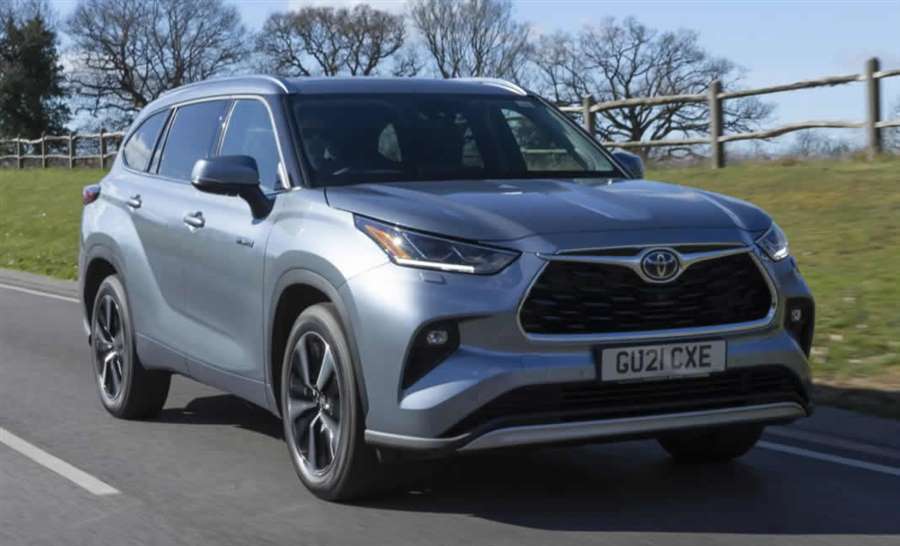
Simple model lineup makes for an easy choice
Toyota’s really made choosing a Highlander easy. There’s a pair of well-equipped trim levels and just one engine, so there’s no need for buyers to navigate a confusing mess of option packs.
The range kicks off with Excel models, which have almost all the equipment you could want – 20-inch alloy wheels, heated leather seats, tri-zone climate control, LED headlamps and a panoramic sunroof to name but a few highlights.
Excel Premium trim adds a few choice luxury touches, such as a head-up display, ventilated front seats and a ‘smart’ rear view mirror (actually a screen with rear camera feed), but unless you’re truly committed to owning the best variant there’s almost no need.
This does mean that the Highlander’s starting price is significantly higher than some of its main rivals, but the gap narrows when you consider similarly-equipped models. It effectively straddles the line between premium hybrid SUVs, such as the Volvo XC90, and more value-oriented offerings such as the Kia Sorento.
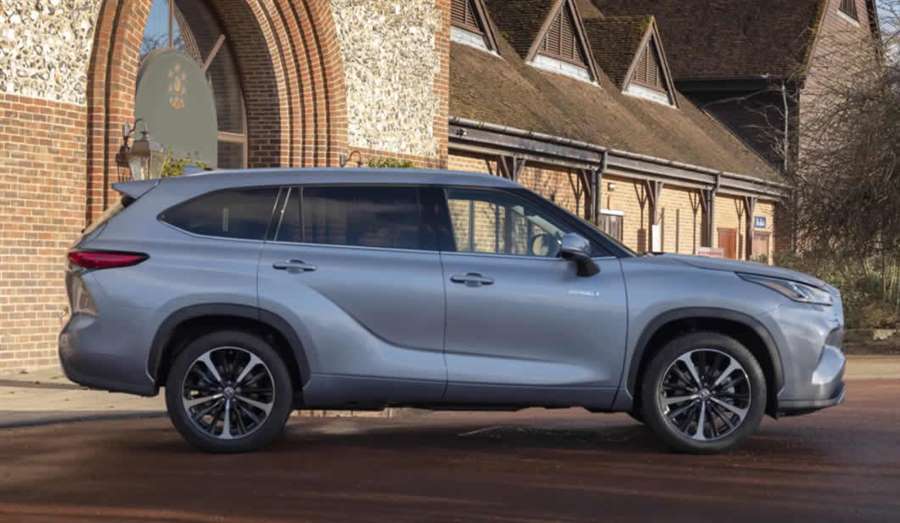
Hybrid engine is particularly good
Toyota’s been building hybrid engines for more than two decades, and its latest effort in the Highlander is a particularly good offering. It’s a self-charging hybrid rather than a plug-in – Toyota says drivers of cars like this typically take longer trips than would suit their limited electric-only range. Though it hasn’t totally ruled out a plug-in Highlander in the future (the mechanically similar RAV4 has a PHEV option), it would likely involve losing the two rearmost seats to make space for the battery – making it unlikely.
It pairs a 2.5-litre four-cylinder petrol engine with two electric motors, shuffling between the two power sources as it sees necessary. It’s got plenty of power, even for such a big car, which means you don’t have to work the engine hard. That eliminates a typical issue of hybrid cars, namely that they tend to rev uncomfortably high – not an issue with the Highlander unless you really try to press on.
It’s also highly refined – nearly silent at a cruise – and very efficient, easily matching its diesel competition in this area. Smooth and powerful, it’s a great match for the Highlander’s bulk.
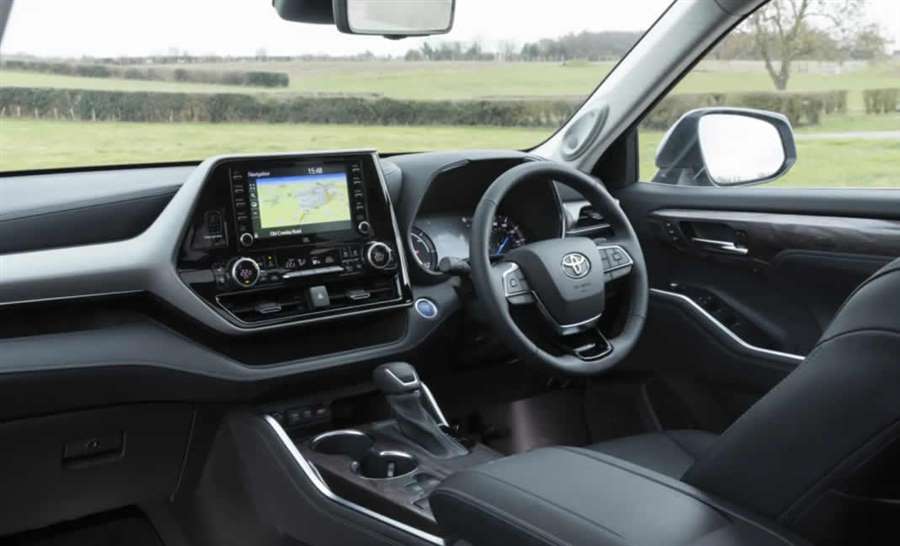
Hugely versatile interior
The Highlander seats seven, though the third row is somewhat tighter than rivals such as the Land Rover Discovery – it’s better suited to children or short journeys with adults.
Toyota Highlander rear three quarterEnlarge0videoEnlarge16photo
There’s loads of room in the two forward rows, though, and the centre row slides forwards and back by 180mm to balance legroom and luggage space.
The boot’s incredibly practical, too. With all seven seats in place there’s more luggage space than you find in a Land Rover Discovery or a Volvo XC90. In five seat mode, it’s bigger yet, and with all the rear seats folded there’s a cavernous 1,909 litres of space up to the roof, with a completely flat floor.
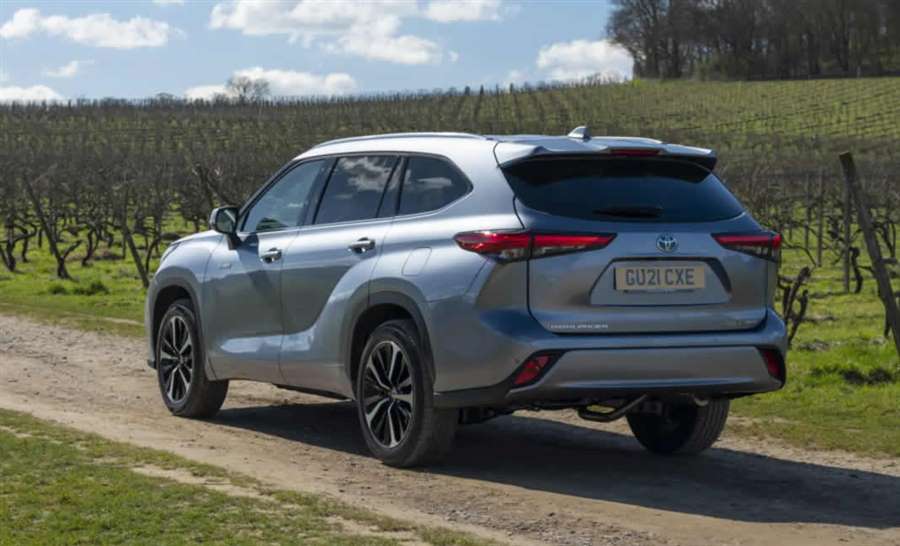
Toyota Highlander practicality and boot space
The Highlander is one of the largest cars Toyota sells – smaller only than the long-wheelbase Land Cruiser and the decidedly van-like Proace Verso.
Those exterior dimensions have been well-used and translate into a spacious interior with seven seats and a cavernous boot.
The front seats are particularly wide, soft and comfortable, as you’d perhaps expect for a car that sells very well in the USA. The second row is great too, with space for a six-foot adult to stretch out.
The third row’s a little tighter. Unlike the Land Rover Discovery, you won’t particularly want to seat adults back here, at least not for long trips – but they’ll be fine on short journeys, and there’s plenty of space for children.
The second row slides fore and aft by 180mm, too, allowing you to effectively balance legroom between the seats. Isofix child seat mounting points are present in the two outer seats.
Interior stowage space is excellent, and has been very well thought out – not always a given, even in cars that purport to be family friendly. The Highlander offers a big glovebox and a large centre cubby under the armrest for larger items, while storage for smaller oddments is ample – there are smartphone-sized pockets in all four doors, ideal when every passenger has their own device.
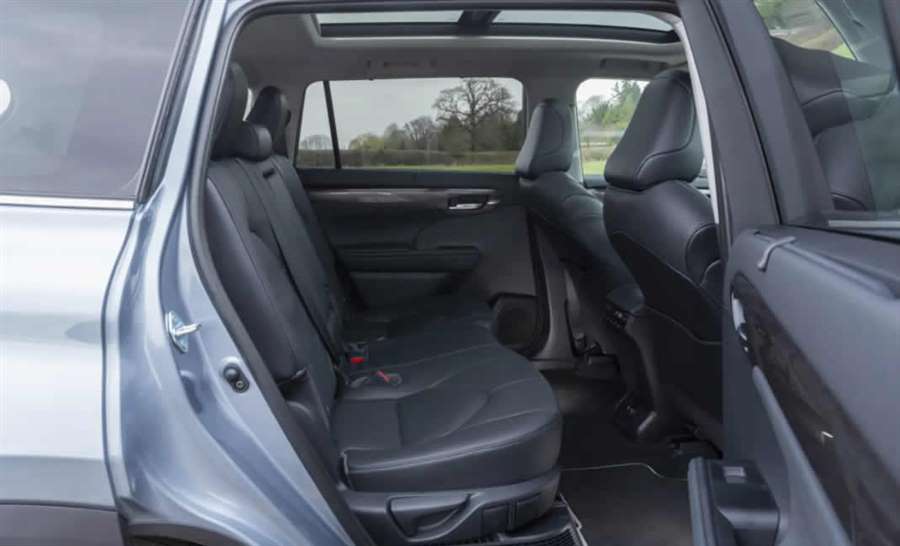
Boot
The Highlander’s boot is one of the biggest around, even among similar large SUVs. With all seven seats in place, there’s still 332 litres of space – that’s the size of a good-sized supermini’s boot, and easily enough to accommodate a family’s weekly shop.
Drop the third row of seats, meanwhile, and you’ll liberate 658 litres – and with both rear rows of seats folded there’s a cavernous 1,909 litres up to the roof. The rear seats also go totally flat, making it easier to load bulky or awkward items, while all cars get an electric tailgate. On top-spec Excel Premium cars, it's gesture-operated by waving a foot under the rear bumper.
If that huge boot still isn’t enough for you, the Highlander will tow a trailer up to 2.0-tonnes in weight.
Safety
The Toyota Highlander hasn’t yet been tested by safety organisation Euro NCAP, but the signs are encouraging for it scoring well when it is.
North American market models were very highly rated by the USA’s Insurance Institute for Highway Safety, earning their highest commendation – a Top Safety Pick+.
The mechanically similar, albeit smaller, RAV4 SUV scored a full five stars when NCAP tested in 2019, which is a further encouraging sign.
Toyota’s loaded the Highlander with active safety aids, too, as part of its Advanced Toyota Safety Sense pack. All models come with autonomous emergency braking capable of detecting vehicles, pedestrians and cyclists in day or night conditions. There’s also Emergency Steering Assist and Intersection Turn Assist, both of which will actively steer you away from an impending collision.
Lane departure warning, adaptive cruise control, automatic high beam headlights, blind spot monitors and rear cross traffic alert complete a thoroughly impressive armada – and it’s all standard equipment on both of the Highlander’s trim levels.
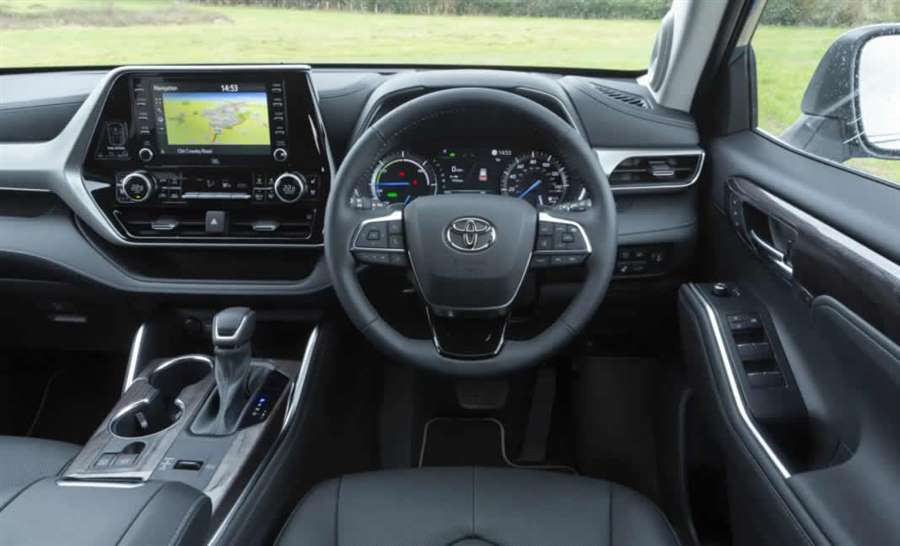
Toyota Highlander interior and comfort
Toyota’s taken plenty of lessons from its RAV4 SUV when it comes to the Highlander’s interior trim, and in many ways that’s a really good thing.
It’s lovely and straightforward to navigate, with most of the controls positioned up relatively high on the dashboard so you don’t have to take your eyes too far off the road to work them, and in a sensible layout.
Better still, functions are, for the most part, controlled by big, chunky buttons and dials rather than awkward touch-sensitive pads. As a result, we think most drivers will feel at home in here very quickly indeed.
Build quality feels up to Toyota’s usual high standards and the Highlander looks as though it’s well-equipped for the rough and tumble of family life. Ergonomics are good, too – it’s not too high up of a clamber into the driver’s seat, and there’s plenty of adjustment. The view out of the narrow rear window is rather compromised, but that’s a gripe you’ll find on most cars of this size and shape.
Those expecting sumptuous luxury like you’d find on a Land Rover Discovery may be disappointed, though. With the exception of a little shiny trim and some token fake wood, almost everything’s a shade of dour grey or black, and the design is practical rather than stylish. Thank goodness for the standard panoramic glass roof, or the Highlander’s interior would feel very dark indeed.
The infotainment system is also rather below-par by the standards of the segment. Its 8.0-inch screen feels rather small perched atop the dashboard, and the interface is outdated and awkward to use. That’s grating against more expensive rivals such as the Land Rover Discovery or Volvo XC90 – but it’s embarrassing to think that base-model Kia Sorentos or SsangYong Rextons come equipped with a superior infotainment system.
The specification is otherwise very good, however. All models come with the aforementioned panoramic roof, but keyless entry, LED headlamps, triple-zone climate control, a wireless charging pad, leather upholstery and a premium JBL sound system are also present even on the ‘base’ model – a high level of spec that goes a long way towards explaining the Highlander’s entry price compared with some rivals’ more Spartan accommodations on their lower trim levels.
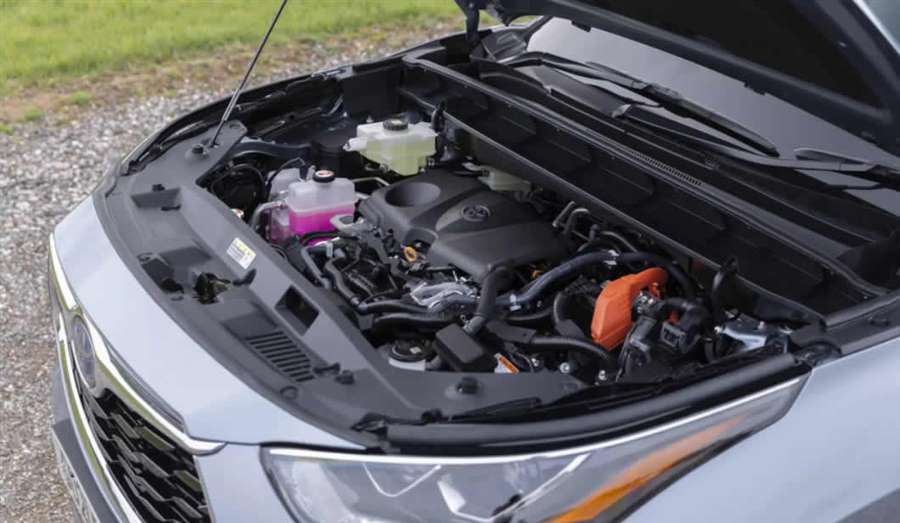
Comfort
Refinement is one of the Highlander’s most impressive points. The hybrid engine is virtually silent at a cruise, and provided you don’t hoof it and keep the revs low it’s very quiet around town too. Combined with low levels of road noise, the most intrusive sound you’ll hear is a moderate level of wind noise whipping around its bluff front end and large door mirrors.
With soft suspension, the Highlander rides well over most surfaces – it’s not as pillowy soft as the Land Rover Discovery’s air springs but still deals effectively with all but the largest potholes. It resists body roll surprisingly well for such a tall car, too, helping reduce potential car sickness – ideal when you could have the back rows full of children…
The front seats are heated on all models, while top-spec cars come with heated and ventilated front seats, heated rear seats and a heated steering wheel. Particularly toasty in the winter.
Toyota Highlander running costs and mpg
What is miles per pound?
Hybrid petrol engines 7.0 - 7.1 mppLow figures relate to the least economical version; high to the most economical. Based on WLTP combined fuel economy for versions of this car made since September 2017 only, and typical current fuel or electricity costs.
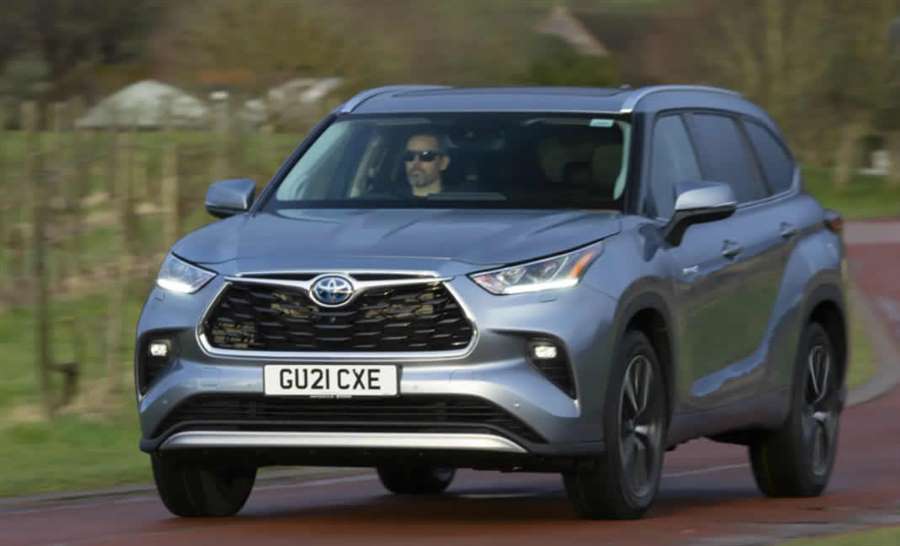
Running costs for the Toyota Highlander should prove impressively low by the standards of the large SUV class, but a slightly deeper dive than usual is required to figure out why.
It’s true that, without a plug-in hybrid (PHEV) model in the range, Toyota can’t claim anything like the 100.9mpg Volvo can for its XC90 T8 (when tested on the WLTP cycle). However, numbers like these are often only achievable with short journeys and regular charging stops. Toyota reckons buyers of large SUVs like the Highlander want a vehicle that’s also efficient on longer journeys.
To that end, fuel economy from its single self-charging hybrid powertrain ranges from 39.2 to 39.7mpg – and during a long, mixed test route we bested that with over 41mpg showing on the trip computer.
That’s a highly impressive figure and one that’s comparable to a lot of diesel SUVs. However, unlike a modern diesel, the Highlander doesn’t require a long warmup period or regular substantial journeys to clear out its emissions systems – it’ll provide strong economy on short runs just as well as it does longer ones.
CO2 emissions range from 160-163g/km, meaning the Highlander attracts a low first year VED bill and even lower company car tax. Those figures are on a par with the Kia Sorento Hybrid, which starts at 158g/km – however, once you apply a similar level of specification, the Kia’s CO2 is higher.
Few surprises here – Toyota cars are some of the most reliable vehicles you can buy, and its hybrids are legendary for their longevity. Just look at the number of Prius taxis clocking up mega miles in cities around the world…
While there’s not yet any data on the Highlander’s past in the UK – remember, this is the first time it’s been available in Western Europe – its reputation in the USA in particular is of a very solid and reliable vehicle.
Like all Toyotas, it’s backed up with a five-year, 100,000 mile warranty, and Toyota dealers are known for providing excellent, fuss-free service.
Toyota Highlander engines and performance
Strong performance, but not for speed demons
Choosing an engine for your Toyota Highlander couldn’t be easier – there’s only one, so you like it or lump it.
It’s the latest evolution of Toyota’s 2.5-litre self-charging hybrid powertrain, similar to the engine found in the RAV4 as well as some Lexus models. It pairs a four-cylinder petrol engine with two electric motors, one on each axle providing four-wheel drive – though the car stays front-wheel drive until it senses a loss of grip.
We’re pleased to say that for most drivers, it should provide stellar service.
With 248hp it’s certainly no slouch – 0-62mph is dealt with in 8.3 seconds, which is more than fast enough for a family SUV. What that power really does is mean you don’t have to strain the Highlander’s engine to make good progress.
That’s important as common to all Toyota hybrids is a continuously variable transmission. These have the tendency to send the revs spiralling high as soon as the driver asks for a bit of extra pace, making for a raucous experience. But with the Highlander’s ample pulling power, especially at low speeds where the two electric motors can really lend a hand, the engine remains hushed unless you really floor it.
It’s possible to force the Highlander to drive in ‘EV’ mode for a few miles, by pressing a button near the gear selector, but for the most part it’s best to simply let the car get on with it. It’ll shuffle between power sources all by itself, and the electric motors can cut in at speeds up to 78mph so they’re even useful on the motorway.
There are four other driving modes, named Eco, Normal, Sport and Trail. Eco dulls the throttle response in a bid to force you to drive more carefully, but it makes the Highlander feel rather sluggish. Sport goes too far the other way, sharpening responses to the point where it’s fairly difficult to drive the car smoothly. We’d recommend leaving the Highlander in Normal mode most of the time.
Trail Mode optimises the four-wheel drive system and accelerator for the best grip off-road. We haven’t had the opportunity to test the Highlander’s ability in the rough stuff, but it’s not really intended as a hardcore mud-plugger – opt for a Land Cruiser if that’s your priority.
Handling
One look at the Toyota’s bulky bodywork ought to be enough to reassure you this isn’t a particularly sporty car. But that’s fine, because it doesn’t try to be – instead, the Highlander’s strength is comfort.
That doesn’t mean it’s a wobbly mess, though. In fact, with a low centre of gravity, it controls body well much better than you’d expect for a car this size.
Toyota Highlander rear corneringEnlarge0videoEnlarge16photo
The steering is lightweight and direct, so it’s easy to manoeuvre the Highlander at slow speeds and position it where it needs to be on the road. That does translate into being slightly twitchy on the motorway, however.
A total lack of meaningful feedback, however, means those who really enjoy driving ought to opt for something more engaging, such as a Skoda Kodiaq.
Toyota Highlander verdict
Should you buy a Toyota Highlander?
The Highlander is a surprise hit from Toyota, packing an incredibly family-friendly interior into a package that’s comfortable, efficient, and very well-equipped.
It comfortably ticks every box that’s expected of a large family SUV and should prove conveniently painless to own, too.
The value story isn’t quite as strong as it needs to be for us to recommend it outright, however. A Highlander Excel is more expensive on manufacturer PCP (at the time of writing) than a Volvo XC90 B5 – a car that feels far more premium, and is better to drive too.
It’s even within spitting distance of the excellent Land Rover Discovery, and significantly more expensive than the fiercely capable – albeit slightly smaller – Kia Sorento Hybrid.
The Highlander’s low CO2 and petrol-fuelled powertrain make it a good choice for a company car, though, and if you’re a private buyer who plans on keeping it for a long time then there’s little else we’re so confident about labelling as reliable.
There aren’t that many direct rivals for the Highlander, so if a well-appointed and well-built hybrid SUV – that doesn’t plug in – is on your shopping list, we don’t think you’ll be disappointed.

